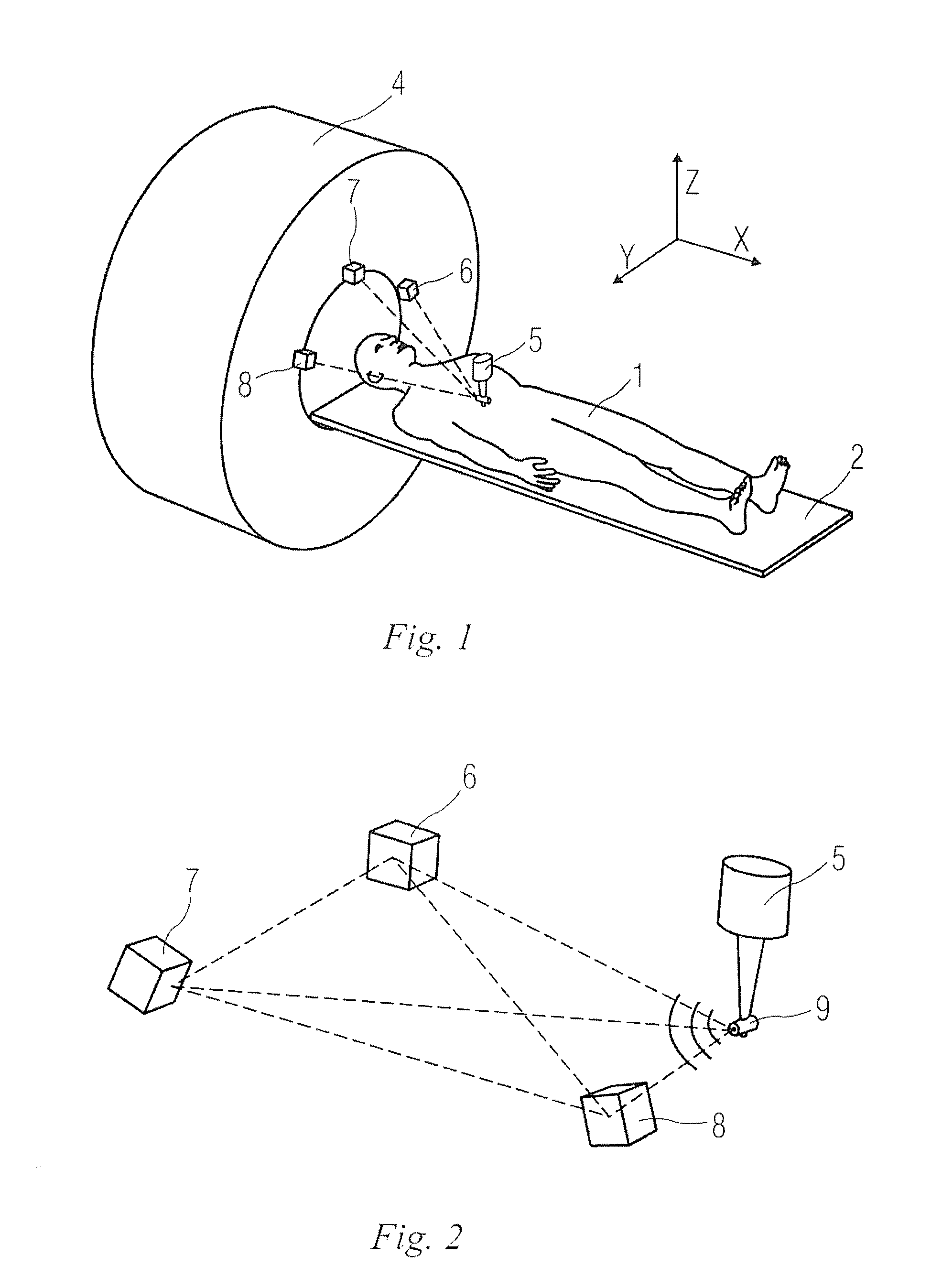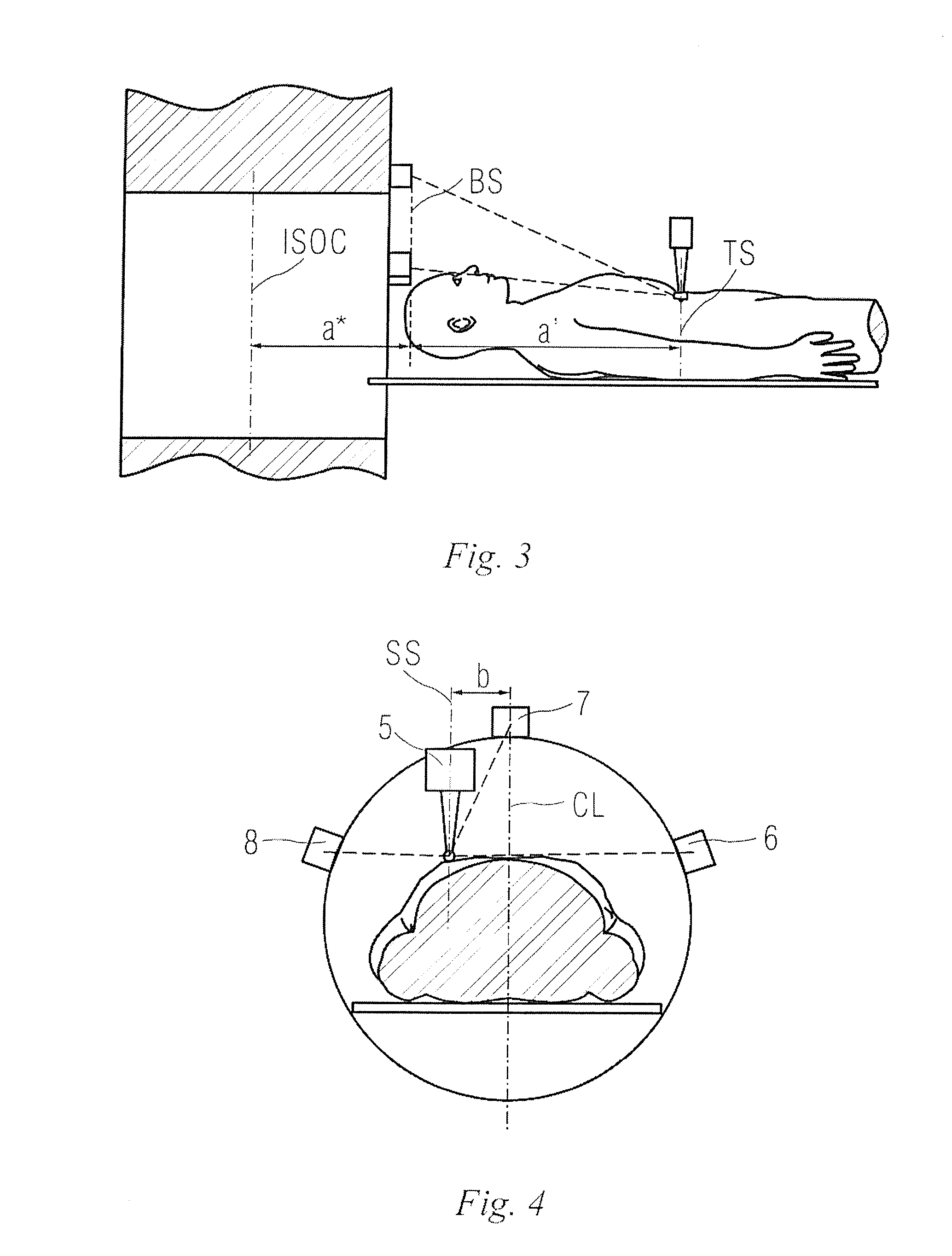Imaging apparatus and positioning apparatus
a positioning apparatus and positioning technology, applied in the field of positioning apparatus, can solve the problems of not allowing direct positioning of sagittal section and coronal section, potential safety risk, harmful to the eyes of the body, etc., and achieve the effect of reducing the workload of pre-positioning imaging sequence and avoiding radiation risk
- Summary
- Abstract
- Description
- Claims
- Application Information
AI Technical Summary
Benefits of technology
Problems solved by technology
Method used
Image
Examples
Embodiment Construction
[0039]In the figures, reference characters are as follows:
[0040]1 body to be detected; 2 examining bed; 3 detected part; 4 imaging unit; 5 indicator; 6, 7, 8 signal detector; 9 signal generator; 10 handle; 11, 12 angle detector; and 13 auxiliary signal generator.
[0041]FIG. 1 schematically illustrates an imaging apparatus in a first embodiment of the present invention. In FIG. 1, a magnetic resonance (MR) imaging device is explained as an example. The imaging device for example comprises: an examining bed 2 carrying a body 1 to be detected; a distance positioning unit for positioning a detected part 3 of the body 1 to be detected; and an imaging unit (magnet) 4 having an imaging region for imaging the detected part 3 of the body 1 to be detected. In the present embodiment, the body 1 to be detected lies on the examining bed 2, and a distance of the detected part 3 of the body 1 to be detected relative to the imaging unit 4 is determined by the distance positioning unit, and then the ...
PUM
 Login to View More
Login to View More Abstract
Description
Claims
Application Information
 Login to View More
Login to View More - R&D
- Intellectual Property
- Life Sciences
- Materials
- Tech Scout
- Unparalleled Data Quality
- Higher Quality Content
- 60% Fewer Hallucinations
Browse by: Latest US Patents, China's latest patents, Technical Efficacy Thesaurus, Application Domain, Technology Topic, Popular Technical Reports.
© 2025 PatSnap. All rights reserved.Legal|Privacy policy|Modern Slavery Act Transparency Statement|Sitemap|About US| Contact US: help@patsnap.com



